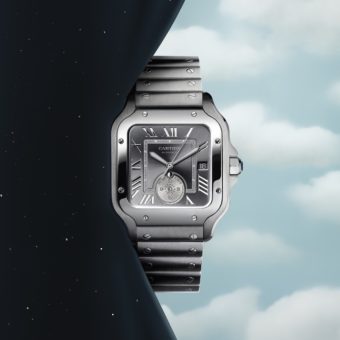Cartier Unveils the Santos de Cartier Dual Time
The Santos watch was conceived by Louis Cartier in 1904 to help aviators tell time when airborne. Since then, this pioneering timekeeper which was one of the first wristwatches in history, has become a true icon. Its signature features – the rounded square case, Roman numerals, square railroad minute track, sword-shaped hour and minute hands,...
Read the article
Apr 25, 2024 by Sabine Zwettler
